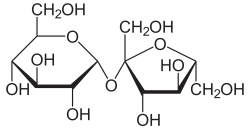Difference between revisions of "Kombucha"
| (11 intermediate revisions by the same user not shown) | |||
| Line 1: | Line 1: | ||
| − | [https://en.wikipedia.org/wiki/Kombucha Kombucha] is a fermented, slightly alcoholic, lightly effervescent, beverage made from sweetened black or green tea. This | + | [https://en.wikipedia.org/wiki/Kombucha Kombucha] is a fermented, slightly alcoholic, lightly effervescent, beverage made from sweetened black or green tea. This sour (acetic acid) drink is often mixed with juice, spices, fruit or other flavorings. The fermentation process involves a '''s'''ymbiotic '''c'''ulture of '''b'''acteria and '''y'''east referred to as a SCOBY or "mother." Health benefits from consumption are associated with the microbial content as well as microbial metabolites. The yeast involved includes [https://en.wikipedia.org/wiki/Saccharomyces_cerevisiae ''Saccharomyces cerevisiae''] and the bacterial component includes [https://en.wikipedia.org/wiki/Komagataeibacter_xylinus ''Gluconacetobacter xylinus''], a member of the [https://en.wikipedia.org/wiki/Acetic_acid_bacteria acetic acid bacteria]. |
==Kombucha Chemistry== | ==Kombucha Chemistry== | ||
| − | The [https://en.wikipedia.org/wiki/Sugar sugar], most likely [https://en.wikipedia.org/wiki/Sucrose sucrose], fructose, and/or glucose | + | The [https://en.wikipedia.org/wiki/Sugar sugar], most likely [https://en.wikipedia.org/wiki/Sucrose sucrose], [https://en.wikipedia.org/wiki/Fructose fructose], and/or [https://en.wikipedia.org/wiki/Glucose glucose] added to the tea is metabolized by the yeast ([https://en.wikipedia.org/wiki/Fermentation fermentation]) in the absence of oxygen ([https://en.wikipedia.org/wiki/Anaerobic_digestion anaerobically]) into [https://en.wikipedia.org/wiki/Carbon_dioxide carbon dioxide] and [https://en.wikipedia.org/wiki/Ethanol ethanol]. |
| + | |||
| + | :C<sub>6</sub>H<sub>12</sub>O<sub>6</sub> (glucose or fructose) → 2 C<sub>2</sub>H<sub>5</sub>OH + 2 CO<sub>2</sub> | ||
| + | |||
| + | For each molecule of glucose or fructose fermented, 2 molecules of ethanol and 2 molecules of carbon dioxide are formed. The ratio of products to reactants is a general chemistry topic referred to as '''''stoichiometry'''''. | ||
| + | |||
| + | As you can see in the table below, sucrose is a dimer (2) of fructose and glucose. During fermentation an enzyme (biological catalysis) is release resulting in the "inversion" of sucrose into fructose and glucose: | ||
| + | |||
| + | :C<sub>12</sub>H<sub>22</sub>O<sub>11</sub> + H<sub>2</sub>O → 2 C<sub>6</sub>H<sub>12</sub>O<sub>6</sub> | ||
| + | |||
| + | As noted above, the SCOBY contains both yeast and bacteria. If only yeast was present the final product would be ethanol and carbon dioxide, but since the acetic acid bacteria are also present, the ethanol is subsequently converted to acetic acid: | ||
| + | :C<sub>2</sub>H<sub>5</sub>OH + O<sub>2</sub> → CH<sub>3</sub>COOH + H<sub>2</sub>O | ||
{| border=1 | {| border=1 | ||
| − | | | + | | ||'''Molecular Formula'''||'''Chemical Structure''' |
|- | |- | ||
|Sucrose||C<sub>12</sub>H<sub>22</sub>O<sub>11</sub>||[[File:Saccharose2.png|250px]] | |Sucrose||C<sub>12</sub>H<sub>22</sub>O<sub>11</sub>||[[File:Saccharose2.png|250px]] | ||
|- | |- | ||
| − | |Glucose||C<sub>6</sub>H<sub>12</sub>O<sub>6</sub>||[[File:Alpha-D-Glucopyranose.png| | + | |Glucose||C<sub>6</sub>H<sub>12</sub>O<sub>6</sub>||[[File:Alpha-D-Glucopyranose.png|125px]] |
|- | |- | ||
| − | |Fructose||C<sub>6</sub>H<sub>12</sub>O<sub>6</sub>||[[File:Beta-D-Fructofuranose.png| | + | |Fructose||C<sub>6</sub>H<sub>12</sub>O<sub>6</sub>||[[File:Beta-D-Fructofuranose.png|150px]] |
|- | |- | ||
| − | |Ethanol||C<sub>2</sub>H<sub>5</sub>OH||[[File:Beta-D-Fructofuranose.png| | + | |Ethanol||C<sub>2</sub>H<sub>5</sub>OH||[[File:Beta-D-Fructofuranose.png|150px]] |
|- | |- | ||
|Carbon dioxide||CO<sub>2</sub>||[[File:co2.png|60px]] | |Carbon dioxide||CO<sub>2</sub>||[[File:co2.png|60px]] | ||
Latest revision as of 13:09, 23 June 2020
Kombucha is a fermented, slightly alcoholic, lightly effervescent, beverage made from sweetened black or green tea. This sour (acetic acid) drink is often mixed with juice, spices, fruit or other flavorings. The fermentation process involves a symbiotic culture of bacteria and yeast referred to as a SCOBY or "mother." Health benefits from consumption are associated with the microbial content as well as microbial metabolites. The yeast involved includes Saccharomyces cerevisiae and the bacterial component includes Gluconacetobacter xylinus, a member of the acetic acid bacteria.
Kombucha Chemistry
The sugar, most likely sucrose, fructose, and/or glucose added to the tea is metabolized by the yeast (fermentation) in the absence of oxygen (anaerobically) into carbon dioxide and ethanol.
- C6H12O6 (glucose or fructose) → 2 C2H5OH + 2 CO2
For each molecule of glucose or fructose fermented, 2 molecules of ethanol and 2 molecules of carbon dioxide are formed. The ratio of products to reactants is a general chemistry topic referred to as stoichiometry.
As you can see in the table below, sucrose is a dimer (2) of fructose and glucose. During fermentation an enzyme (biological catalysis) is release resulting in the "inversion" of sucrose into fructose and glucose:
- C12H22O11 + H2O → 2 C6H12O6
As noted above, the SCOBY contains both yeast and bacteria. If only yeast was present the final product would be ethanol and carbon dioxide, but since the acetic acid bacteria are also present, the ethanol is subsequently converted to acetic acid:
- C2H5OH + O2 → CH3COOH + H2O
| Molecular Formula | Chemical Structure | |
| Sucrose | C12H22O11 | 
|
| Glucose | C6H12O6 | 
|
| Fructose | C6H12O6 | 
|
| Ethanol | C2H5OH | 
|
| Carbon dioxide | CO2 |
Kombucha Microbiology
Testing
References
to oxidize yeast-produced alcohols to acetic acid (and other acids).[4] Although the SCOBY is commonly called "tea fungus" or "mushroom", it is actually "a symbiotic growth of acetic acid bacteria and osmophilic yeast species in a zoogleal mat [biofilm]".[1] The living bacteria are said to be probiotic, one of the reasons for the popularity of the drink.[5][6]
drink commonly consumed for its supposed health benefits. Sometimes the beverage is called kombucha tea to distinguish it from the culture of bacteria and yeast.[2]